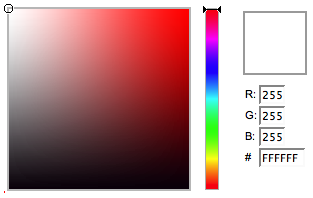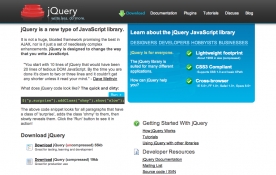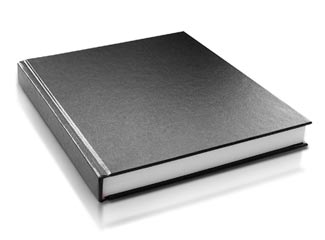Note: Jack went ahead and fixed virtually everything mentioned in this post – great job!
We’ve been holding off on talking about the speed of the jQuery selectors for the new 1.1 release until our release was closer to being ready – however, it seems as if that process has already been expedited. So with that already out of the bag, lets look at the selector speeds of jQuery.
In short: For jQuery 1.1 we worked really really hard to make its selectors really fast. In fact, according to all our tests we were faster than any other selector library. Working on the 1.1 release, Dean Edwards’ cssQuery far out-performed any other selector library. It’s really comprehensive, and really fast.
Today, Jack Slocum announced his new DOMQuery selector library. In short: The bar has been raised. His library is very very fast. Quite possibly the fastest available today.
However, in the comparison between his library and ours, some mistakes were made that we’d like to clear up. (By both Jack and jQuery) (For reference, here’s the comparision suite that I used for my tests.)
jQuery completely supports all attribute selectors.
For example, [@foo], [@foo=bar], etc. The notable difference is that jQuery uses the XPath-style syntax in this situation. Since this was not accounted for in Jack’s test, it appeared as if we failed for all of the attribute selector tests.
Our “elem:empty” works just fine.
You can see in Jack’s test that all selectors (but DOMQuery) fail :empty – that’s more due to the fact that he compares the results against DOMQuery, which gets the result wrong. The specification states that something is empty if it doesn’t contain any child elements or text nodes. That doesn’t seem to be accounted for in this case.
[foo!=bar], :first, :last aren’t part of any specification.
…and yet they’re in the test suite. Incidentally, jQuery does implement :first and :last – but not [foo!=bar] (which appears to be only in cssQuery?). In all, its very strange to compare yourself against others when its not something that you’re designed to do.
What does span:not(span.hl-code) match?
This is a strange gray area that I haven’t seen talked about anywhere, and the specification doesn’t help to clear it up at all. Should the resulting set be all spans that don’t have a class of hl-code – or nothing, since you’ve filtered out all the spans. For example:
// Finds nothing in both
span:not(span)
=> []
// Finds spans that don't have a class of 'foo', in both
span:not(.foo)
=> [ <span>, <span>, ... ]
// jQuery's interpretation of the combination:
$("span:not(span.foo)")
=> []
// DOMQuery's interpretation of the combination:
Ext.select("span:not(span.foo")
=> [ <span>, <span>, ... ]
We’ll fully concede that we may be very wrong on this point – but I’m curious to hear what others have to say, and what they’re interpretations of the spec, are.
DOMQuery doesn’t account for duplicates.
Currently, doing Ext.select(“div div”) returns MORE elements than doing just Ext.select(“div”) – and doing Ext.select(“div div div”) returns yet another different set of elements, but still more than just doing Ext.select(“div”). In fact, accounting for duplicates is a huge problem in JavaScript selector libraries – and currently, jQuery is the only one that gets it right.
A big point of this is that accounting for duplicates can be really expensive (computationally) – so the fact that DOMQuery doesn’t account for duplicates gives the appearance of a speed boost. For example:
// DOMQuery
Ext.select("div").elements.length
=> 246
Ext.select("div div").elements.length
=> 624
Ext.select("div div div").elements.length
=> 523
// jQuery
jQuery("div").length
=> 246
jQuery("div div").length
=> 243
jQuery("div div div").length
=> 239
DOMQuery doesn’t support multiple filters: elem.foo[foo=bar] or elem.foo.bar
Until this is implemented, a comparison with any other library simply isn’t fair. Building a library that’s fully capable of handling aspects like that (see: cssQuery, jQuery) comes at a great cost. (Whether it be in code size or speed cost.)
DOMQuery’s #id selectors don’t check for context
You’ll notice if you try to do a query like:
Ext.select("div #badid").elements
=> [div#badid]
That you’ll get an element by “badid” — even if that element isn’t actually inside of a div. Since no check for validity is actually made in the DOMQuery code, it’s blazing fast – and very wrong.
I should mention that until 1.1, jQuery was wrong on this point too, so its an easy issue to overlook.
Where’d the root element go?
You’ll find that searches for “html” and “*” in DOMQuery are strangely missing one obvious thing: The HTML element. seems kind of weird to exclude the root DOM element from all queries; especially since this is perfectly valid: “html > body *”.
…and to make it fair – here’s one for us :-)
Our :nth-child(even/odd) is flawed.
Currently it seems to only select one element (!?). I made a ticket for this and it should be resolved for this Sunday’s 1.1 release.
In all, its great to see the speed leaps that’ve been made by DOMQuery. Selector speed is one area where competition is truly warranted; every time a new speed increase is made, everyone wins (users, developers – everyone).
In fact, looking over his code, I already have some more ideas on how to increase the speed of jQuery!
So, to Jack: Thanks for helping to keep us on our toes – we’re looking forward to seeing your library improve, and everyone win.







